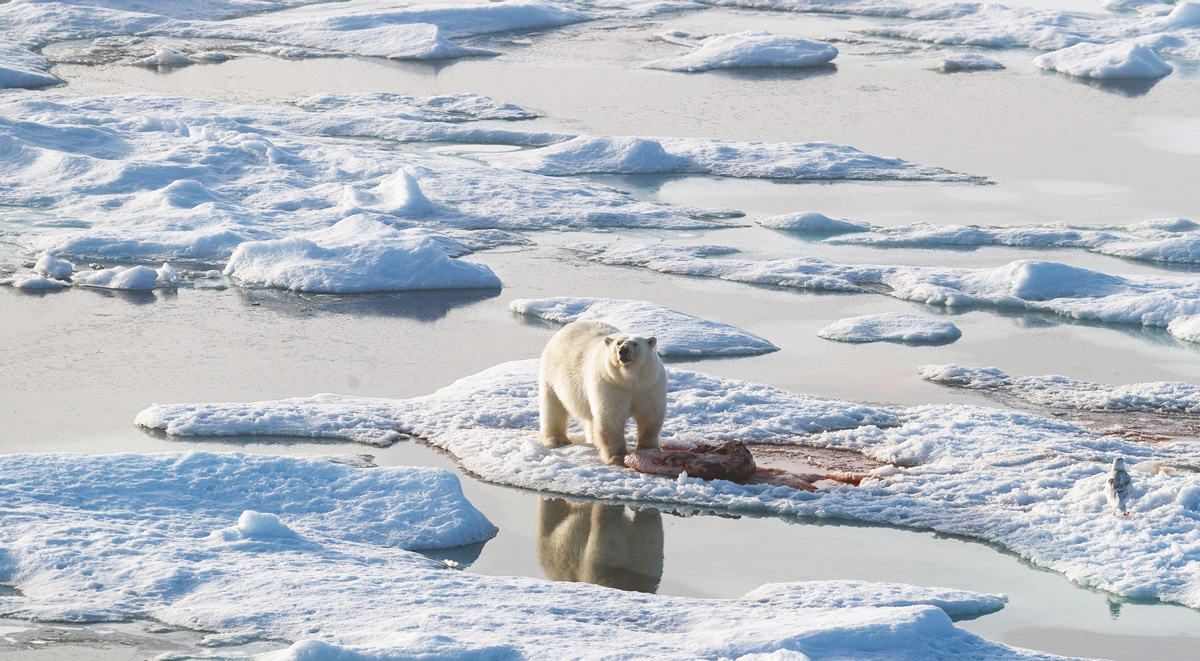The majestic Snow Owl is a powerful Arctic predator. Known for its striking white plumage, it thrives in harsh environments.
The Snow Owl, also called the Snowy Owl, stands out with its beautiful white feathers and piercing yellow eyes. It inhabits the Arctic regions, where it expertly hunts for prey such as lemmings and other small mammals. This bird of prey is well-adapted to cold climates, with a thick layer of feathers providing excellent insulation.
Snow Owls are not just skilled hunters; they are also vital to the ecosystem, helping control rodent populations. Their impressive wingspan and silent flight make them effective nocturnal hunters, capturing the fascination of bird enthusiasts and researchers alike.
The Snowy Owl: A Symbol Of Arctic Beauty
The Snowy Owl is a stunning creature that embodies the essence of Arctic beauty. With its pure white feathers and piercing yellow eyes, it captivates the imagination. These majestic birds are not just beautiful; they are also skilled predators of the Arctic tundra.
Myth And Lore
Throughout history, the Snowy Owl has been a symbol in many cultures. Native American tribes often regarded it as a messenger of the spirit world. In Norse mythology, Snowy Owls were thought to be protectors of warriors.
Many legends describe these owls as wise and mystical beings. Their ability to thrive in harsh conditions added to their mythical status. Tales often mention their role in guiding lost souls and offering wisdom to those who seek it.
Iconic Appearance
The Snowy Owl’s appearance is truly iconic. Its white feathers provide excellent camouflage in snowy environments. Males are almost entirely white, while females have dark spots, adding to their beauty.
Here is a quick summary of their physical characteristics:
| Feature | Description |
|---|---|
| Feathers | Pure white with some dark spots |
| Eyes | Bright yellow |
| Size | Up to 27 inches tall |
| Wingspan | Up to 57 inches |
Snowy Owls have unique adaptations that help them survive in the Arctic. Their dense feathers provide insulation against the cold. They also have feathered feet to protect them from freezing temperatures.
In summary, the Snowy Owl is not just a predator but a symbol of Arctic beauty and resilience. Their myths, lore, and iconic appearance make them fascinating creatures worthy of admiration.

Credit: www.duluthnewstribune.com
Habitat And Range: The Snowy Owl’s Domain
The Snowy Owl is a majestic predator of the Arctic regions. This magnificent bird thrives in some of the harshest environments on Earth. Understanding its habitat and range helps us appreciate its unique adaptations.
Arctic Circle Territories
The Snowy Owl primarily inhabits the Arctic Circle. It can be found across northern Canada, Alaska, Greenland, Iceland, and parts of Russia. These regions offer vast, open tundra and coastal areas, ideal for hunting.
Snowy Owls prefer areas with minimal tree cover. This allows them to spot prey easily. The tundra provides a perfect camouflage with its snow-covered landscape.
| Region | Characteristics |
|---|---|
| Northern Canada | Vast tundra, minimal trees |
| Alaska | Coastal plains, snowy landscapes |
| Greenland | Ice-covered, open spaces |
| Russia | Open tundra, sparse vegetation |
Migration Patterns
Snowy Owls are known for their irruptive migration. This means they don’t follow a regular migration pattern. Instead, they migrate based on food availability.
During winters, they can travel as far south as the northern United States. In some years, they have been spotted in areas like New York and Ohio.
- Food scarcity in the Arctic prompts migration.
- They follow lemming population cycles.
- Southern migration can vary annually.
Understanding these patterns helps in studying their behavior and protecting their habitats.
Anatomy Of The Snowy Owl
The snowy owl, a majestic predator of the Arctic, boasts unique features. Its anatomy is specifically adapted for survival in harsh conditions. Let’s explore these unique adaptations and physical characteristics.
Adaptations For Arctic Survival
- Feather Insulation: Thick feathers cover the snowy owl’s entire body.
- Camouflage: White feathers blend with the snowy surroundings.
- Sharp Talons: Powerful claws help capture prey in the snow.
- Keen Eyesight: Large eyes detect prey even in low light.
- Silent Flight: Soft-edged feathers allow noiseless hunting.
Physical Characteristics
| Feature | Description |
|---|---|
| Body Size | Approximately 20-28 inches in length. |
| Wingspan | Up to 5 feet wide. |
| Weight | Ranges from 3.5 to 6.5 pounds. |
| Plumage | White feathers with black spots, more visible in females. |
| Eyes | Bright yellow, adapted for seeing in low light. |
| Beak | Short, curved, and black, ideal for tearing flesh. |
Hunting Techniques And Diet
The majestic Snow Owl is a skilled Arctic predator. It has unique hunting techniques and a specialized diet. Understanding its behavior helps us appreciate its role in the ecosystem.
Nocturnal Vs. Diurnal Activity
Snow Owls are versatile hunters. They can hunt both day and night. This ability makes them unique among owls. In winter, they often hunt during the day. This is because Arctic nights are very long. In summer, they hunt at night to avoid the heat. Their adaptable nature helps them survive.
Prey And Predation
Snow Owls have a varied diet. They primarily eat small mammals. Their favorite prey is lemmings. They also hunt birds, fish, and insects. They are opportunistic feeders. This means they eat what is available.
Snow Owls use their sharp talons to catch prey. They have excellent vision and hearing. This helps them locate prey even under snow. Their hunting skills are impressive. They can capture prey silently and swiftly.
| Prey Type | Frequency |
|---|---|
| Small Mammals | High |
| Birds | Medium |
| Fish | Low |
| Insects | Low |
Snow Owls are top predators. Their hunting helps control prey populations. This balance is crucial for the ecosystem. Their role is vital in maintaining Arctic biodiversity.
Mating Rituals And Reproduction
The majestic Snow Owl is not just a fierce Arctic predator. Their mating rituals and reproduction are equally fascinating. This section delves into the unique behaviors and care involved in their reproduction process.
Courtship Behaviors
Snow Owls have intriguing courtship behaviors. The male performs elaborate displays to attract a female. He flies in circles and makes loud calls. He also presents prey to the female as a gift. This act shows he can provide food.
The male’s dance is another important part. He puffs up his feathers and dances around the female. This dance shows his strength and health.
Nesting And Offspring Care
Once the female accepts the male, they find a nesting site. They usually choose a high spot on the tundra. This spot keeps them safe from predators.
| Nesting Site | Characteristics |
|---|---|
| High spot on tundra | Safe from predators |
| Snow-covered ground | Camouflaged |
The female lays 5 to 14 eggs. She incubates the eggs for about 32 days. During this time, the male hunts and brings food. Both parents take care of the young chicks.
- Female lays 5-14 eggs
- Incubation lasts 32 days
- Male provides food
- Both parents care for chicks
The chicks grow quickly. They leave the nest after about 25 days. By 50 days, they start to fly. The parents continue to protect and feed them until they can hunt on their own.
Snow Owls show remarkable dedication to their young. Their reproductive process ensures the survival of their species in harsh Arctic conditions.

Credit: www.amazon.com
Conservation Status: Protecting The Snowy Owl
The majestic Snowy Owl is a symbol of the Arctic wilderness. This beautiful bird faces numerous challenges to its survival. Understanding its conservation status is essential for its protection. Let’s delve into the threats and efforts to safeguard this iconic predator.
Threats To Survival
Snowy Owls face many threats in their natural habitat. Climate change is a major concern. Warmer temperatures affect their prey availability.
Human activities also pose significant risks. Habitat destruction and pollution are detrimental. Illegal hunting further endangers their populations.
Climate Change:
- Warmer temperatures
- Reduced prey availability
- Changing migration patterns
Human Activities:
- Habitat destruction
- Pollution
- Illegal hunting
Conservation Efforts Worldwide
Many organizations work tirelessly to protect Snowy Owls. Conservation efforts include research, habitat protection, and public awareness campaigns.
Researchers study Snowy Owl behavior and migration. This data helps in developing effective conservation strategies.
Governments and NGOs create protected areas. These areas ensure safe habitats for Snowy Owls to thrive.
Public awareness campaigns educate communities. People learn about the importance of Snowy Owls and their conservation.
| Conservation Efforts | Actions |
|---|---|
| Research | Study behavior and migration |
| Habitat Protection | Create protected areas |
| Public Awareness | Educate communities |
By addressing these threats and continuing conservation efforts, we can ensure the survival of the Snowy Owl. This majestic predator deserves our protection and admiration.
Snowy Owls And Climate Change
Snowy Owls, with their white feathers and piercing yellow eyes, are symbols of the Arctic. The changing climate affects these majestic birds. This section dives into how global warming impacts them and their adaptation strategies.
Impact Of Global Warming
Global warming leads to rising temperatures. This affects the Arctic habitat of Snowy Owls. The melting ice and warmer winters disrupt their hunting grounds.
Snowy Owls rely on lemmings for food. Lemmings thrive in cold, snowy conditions. Warmer temperatures reduce lemming populations.
The scarcity of lemmings forces Snowy Owls to travel further. This increases their energy expenditure and reduces their survival chances. Nesting sites also become less secure.
| Impact | Description |
|---|---|
| Temperature Rise | Melting ice disrupts habitats. |
| Food Scarcity | Lemming populations decline. |
| Increased Travel | Owls travel further for food. |
| Nesting Issues | Unstable nesting sites. |
Adaptation To Changing Environments
Snowy Owls show remarkable adaptation skills. They adjust their diet when lemmings are scarce. They hunt birds and small mammals instead.
These owls also change their migration patterns. They fly to areas with more food and better nesting sites. This helps them survive in a changing world.
Scientists monitor Snowy Owls to understand their adaptation. Research helps in conservation efforts. Protecting their habitat is key to their survival.
- Diet adjustment to include birds and small mammals.
- Migrating to new areas with abundant food.
- Scientific monitoring for better conservation.
Snowy Owls’ ability to adapt is crucial. Their survival depends on our efforts to mitigate climate change.

Credit: www.quarkexpeditions.com
Cultural Significance And Human Interaction
The majestic Snowy Owl has fascinated humans for centuries. This arctic predator holds a special place in various cultures and continues to captivate our imaginations today. From ancient myths to modern media, the Snowy Owl’s presence is both powerful and enduring.
In Indigenous Cultures
For many Indigenous cultures, the Snowy Owl symbolizes wisdom and protection. In Inuit traditions, it represents the spirit of ancestors guiding and watching over the community. Some tribes even believe the Snowy Owl can communicate messages from the spirit world.
These owls are often featured in tribal stories and artwork. They are depicted with great reverence and respect. Their striking white feathers are considered sacred and are used in ceremonial attire. This deep connection highlights the importance of the Snowy Owl in Indigenous beliefs and practices.
Snowy Owls In Popular Media
The Snowy Owl has also made a significant impact in popular media. One of the most famous portrayals is Hedwig from the Harry Potter series. As Harry Potter’s loyal companion, Hedwig brought the Snowy Owl into the spotlight, capturing the hearts of millions.
- Movies and TV shows often feature Snowy Owls to evoke mystery and magic.
- Books and literature frequently use them as symbols of wisdom and guidance.
- Snowy Owls are popular in art and photography, admired for their beauty and grace.
This media presence has helped raise awareness about the Snowy Owl’s natural habitat and the challenges it faces. Fans of these stories often develop a deeper appreciation for wildlife and conservation efforts.
Research And Studies: Uncovering Owl Secrets
The majestic snow owl, known for its beauty, has captivated scientists. They have conducted extensive research to understand this arctic predator. Through tracking and observation, many secrets about the snow owl have come to light.
Tracking And Observation
Scientists use advanced technology to track snow owls. They attach GPS devices to the owls. These devices provide real-time location data. This helps researchers understand their migration patterns. They also observe the owls in their natural habitat.
Observation reveals much about the owl’s behavior. Scientists note their hunting techniques. They also study their interaction with other animals. This data is crucial for conservation efforts. It helps protect the snow owl’s habitat.
Scientific Discoveries
Research has led to many discoveries about snow owls. One key finding is their diet. Snow owls primarily eat small mammals. They also consume birds and fish. This diet varies based on their location.
Another discovery is their breeding habits. Snow owls mate for life. They usually lay 3 to 11 eggs. The male hunts while the female guards the nest. This teamwork ensures the survival of their young.
Scientists have also studied their communication methods. Snow owls use various calls and sounds. Each sound has a specific meaning. Understanding these sounds helps in studying their behavior and social structure.
Below is a summary of some key scientific discoveries:
| Aspect | Discovery |
|---|---|
| Diet | Small mammals, birds, fish |
| Breeding | Mate for life, 3 to 11 eggs |
| Communication | Various calls and sounds |
The research on snow owls is ongoing. Each new discovery adds to our understanding. It also helps in conservation efforts. Protecting these majestic creatures is vital.
Encounters In The Wild: Tips For Owl Watching
Observing the majestic Snow Owl in its natural habitat is a unique experience. These Arctic predators are a sight to behold. Here are tips to help you make the most of your owl watching adventure.
Best Locations For Sightings
To increase your chances of spotting a Snow Owl, visit these locations:
- Arctic Tundra: The Snow Owl’s primary habitat. Look for them perched on mounds.
- Alaska: Many Snow Owls migrate here during winter. Coastal areas are ideal.
- Canada: Particularly in open fields and marshlands. Saskatchewan is a hotspot.
- Northern Europe: Norway and Finland offer great opportunities. Winter months are best.
Responsible Wildlife Observation
When observing Snow Owls, it’s crucial to respect their environment:
- Keep Your Distance: Use binoculars or a zoom lens. Never approach too closely.
- Stay Quiet: Noise can disturb these birds. Speak in whispers and move slowly. </li
- Avoid Flash Photography: Flashes can startle owls. Use natural light or a steady hand.
- Follow Local Guidelines: Each region may have specific rules. Always adhere to them.
Responsible observation ensures the safety of both you and the Snow Owls. It also helps to preserve their natural habitat for future generations.
Frequently Asked Questions
What Does A Snow Owl Eat?
Snow Owls primarily feed on small mammals like lemmings and voles. They also hunt birds and fish. Their diet varies based on seasonal availability.
Where Can Snow Owls Be Found?
Snow Owls are native to the Arctic regions. They can be found in tundra landscapes and open areas with minimal tree cover.
How Do Snow Owls Hunt?
Snow Owls use their keen eyesight and hearing to locate prey. They often hunt during the day and swoop down silently to catch their food.
What Is The Lifespan Of A Snow Owl?
Snow Owls typically live for about 10 years in the wild. In captivity, they can live up to 28 years.
Conclusion
The majestic Snow Owl captivates with its beauty and hunting prowess. This Arctic predator plays a crucial role in its ecosystem. By understanding its habits and habitat, we can appreciate its importance. Protecting the Snow Owl ensures the balance of Arctic wildlife.
Let’s cherish and safeguard this magnificent bird for future generations.










